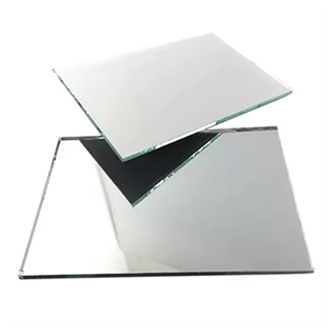Dec . 31, 2024 11:41 Back to list
Understanding the Benefits and Applications of Low E Coated Glass in Modern Architecture
Understanding Low-E Coated Glass Benefits and Applications
In the realm of modern architecture and construction, energy efficiency is more important than ever. One of the key innovations contributing to this goal is Low-E (low emissivity) coated glass. This advanced material has gained prominence for its ability to enhance energy conservation in buildings, providing a multitude of benefits that have made it a preferred choice among architects, builders, and homeowners alike.
What is Low-E Coated Glass?
Low-E coated glass is essentially a type of window glass that has been treated with a special microscopically thin coating. This coating reflects infrared light, thus minimizing the amount of heat that can pass through the glass without obstructing the natural light entering a building. The result is an efficient barrier that allows for more comfortable indoor temperatures while reducing energy costs.
The Low-E coating can be applied to either single-pane or multi-pane glass and can be situated on either the exterior or interior side of the window. There are typically two types of Low-E coatings hard-coat and soft-coat. Hard coatings are more durable and often utilized in commercial applications, while soft coatings provide better performance and are commonly used in residential settings.
Benefits of Low-E Coated Glass
1. Energy Efficiency One of the most significant advantages of Low-E coated glass is its ability to reduce energy consumption. By reflecting heat back into a room during the winter and keeping it out during the summer, Low-E glass minimizes the need for heating and cooling systems to work overtime, ultimately leading to lower utility bills.
2. UV Protection Low-E glass can also block a significant amount of ultraviolet (UV) radiation from the sun. This is important for preserving interior furnishings, carpets, and artwork from fading, thus prolonging their lifespan and maintaining their aesthetic appeal.
low e coated glass

3. Condensation Reduction The insulating properties of Low-E coated glass can help reduce condensation on the glass surface. By maintaining a higher surface temperature, it minimizes the formation of moisture, which can lead to mold and mildew issues in homes or buildings.
4. Comfort In spaces with Low-E windows, occupants experience a more consistent indoor temperature, enhancing overall comfort. This is especially beneficial in regions with extreme weather conditions, where temperature fluctuations are common.
5. Environmental Impact By reducing energy consumption and waste, Low-E coated glass contributes to sustainability efforts. Buildings that utilize energy-efficient materials are more environmentally friendly, resulting in lower carbon footprints.
Applications of Low-E Coated Glass
Low-E coated glass can be used in a variety of settings, including residential, commercial, and industrial applications. In residential buildings, Low-E windows can be installed in new constructions or retrofitted into existing homes. They are popular in all types of climates and are especially advantageous in areas with extreme seasonal variations.
In commercial buildings, where large glass facades are common, Low-E glass plays a crucial role in minimizing energy costs. It allows for expansive windows that enhance aesthetics while still adhering to energy codes and regulations. Additionally, Low-E glass is increasingly being utilized in green building designs aiming for LEED (Leadership in Energy and Environmental Design) certification, as it supports energy-efficient practices.
Conclusion
Low-E coated glass represents a significant advancement in building materials that align with contemporary energy efficiency goals. Its ability to control solar heat gain, reduce energy consumption, and enhance indoor comfort makes it an invaluable component of modern architecture. As both builders and consumers increasingly prioritize sustainability, the demand for Low-E glass will likely continue to grow, driven by its versatile applications and substantial benefits. Investing in Low-E coated glass not only enhances a building's aesthetic appeal but also contributes to long-term environmental sustainability, making it a smart choice for the future.
-
Safety and Style with Premium Laminated Glass Solutions
NewsJun.24,2025
-
Reinvents Security with Premium Wired Glass
NewsJun.24,2025
-
Premium Float Glass Line for Modern Architecture
NewsJun.24,2025
-
Low Emissivity Glass for Energy-Efficient Architecture
NewsJun.24,2025
-
High-Performance Insulated Glass Solutions for Modern Architecture
NewsJun.24,2025
-
Elevates Interior Style with Premium Silver Mirror
NewsJun.24,2025
Related PRODUCTS














